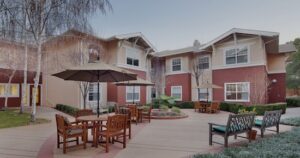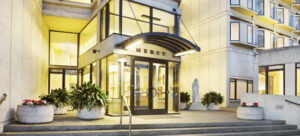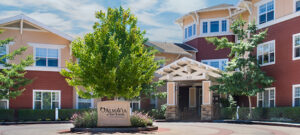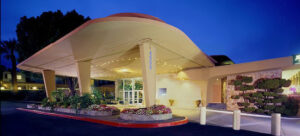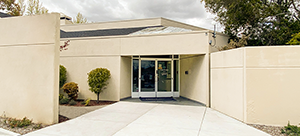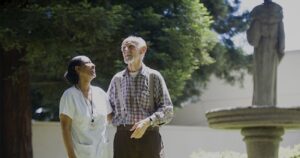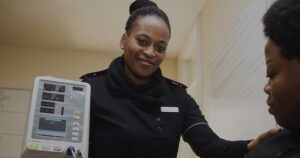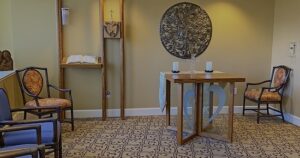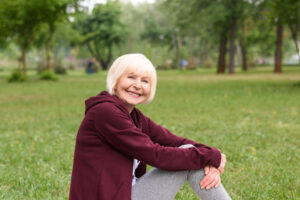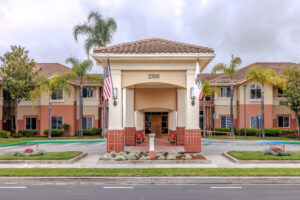Did you know according to the U.S. Fire Administration, older adults who are 65 and older are twice as likely to have an injury or death in a fire as compared to the general population?
The good news is research has shown living in a building with sprinkler systems dramatically reduces incidents of death or injury from fires. There are also some key preventative actions seniors can engage in to create safety habits that can both prevent fires and prepare older adults to act in the event of a fire.
Cooking Equipment
The Consumer Product Safety Commission lists unattended cooking as the number one cause of fire injuries at home. Older adults can be especially vulnerable to forgetting to turn off a stovetop or to have a piece of their clothing unknowingly catch on fire. The best preventative measure for fires from cooking equipment is to always “stand by the pan.” If you do need to leave the area for a minute, bring a cooking spoon with you to help you remember to return to cooking. As well, keep heated cooking areas clear of other items while cooking. Finally, if a fire does start, use baking soda, not water, to put out the fire.
Candles
In a power outage, seniors need to use flashlights, not candles, to move around their homes. For decorative purposes, use battery-operated candles instead of real candles. This is especially true for older adults who use oxygen tanks. Do not use candles around oxygen tanks, especially in a smaller, enclosed area such as a bedroom.
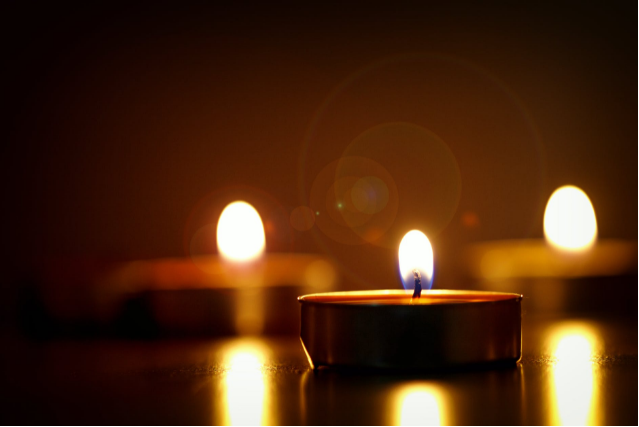
Heating and Electrical Equipment
Open fireplaces, space heaters, electric blankets, lamps, computers, and TVs can all become a fire hazard if not taken care of properly. Fireplaces should be inspected every year, have a tempered screen door and have a three-foot radius around them that is cleared of decorative or other objects. Do not tuck electric blankets into the sides of the bed, and turn them off before falling asleep. Make sure to turn them off/unplug when not in use with all plug-in electric devices. Avoid using propane or kerosene space heaters.
Fire Extinguishers
Keep fire extinguishers in multiple rooms, and make sure both seniors and their guests know where they are located. Take the time to practice using a less expensive fire extinguisher outside to understand how they work. Mark your calendar with the expiration dates of your fire extinguishers, and if a fire is still burning after using a fire extinguisher for 20 seconds, go ahead and call 911.
Smoke and Carbon Monoxide Alarms
Each floor of your living space needs to have a smoke alarm. It is also safest to have a smoke alarm inside each bedroom and just outside each bedroom. Ensure to keep up with the maintenance of the smoke alarms — checking them monthly, replacing batteries twice a year, and replacing the alarms every 10 years.
Because more than half of fires occur during sleeping hours, older adults must be able to react to an alarm. If a senior has hearing aids, test the alarm to see if they can hear it without their hearing aid. Another option is to look into alternative alarms — some have strobe lights, vibration notifications, or low-pitched sounds that are easier to hear for those with some level of hearing loss.
Escape Plans
One of the most important fire prevention measures for seniors is to have a plan in place in case of a fire. The foundation for any fire escape plan for an older adult is to keep their eyeglasses, hearing aids, a telephone (cell or landline), cane/wheelchair/walker, and a whistle right next to their bed. A whistle can help first responders or other adults in the house locate seniors in a fire.
A senior should be able to get out of the house with their escape plan in less than three minutes. According to the U.S. Fire Administration, anyone in a home fire has less than three minutes to escape once a fire breaks out. The escape plan should include two different escape routes if one is blocked; practice them at least twice a year. Keep these escape routes clear at all times, and never block stairs or doorways.
Safe Senior Communities at Elder Care Alliance
The U.S. Fire Administration urges, “If it is possible for seniors to move into a house or community with sprinklers, they should do so.” This is especially true because many mobility limitations can prevent older adults from escaping in less than three minutes.
At Elder Care Alliance, we value safety in all of our communities. Our homelike amenities support quality of life while freeing residents from the worries of home maintenance. Each Elder Care Alliance community reflects the neighborhood in which it’s situated by ensuring all the familiar comforts of home are made available to residents and their loved ones. So if you or a loved one are looking for a safe, comfortable living space, contact us today to learn more about our communities where older adults flourish.

